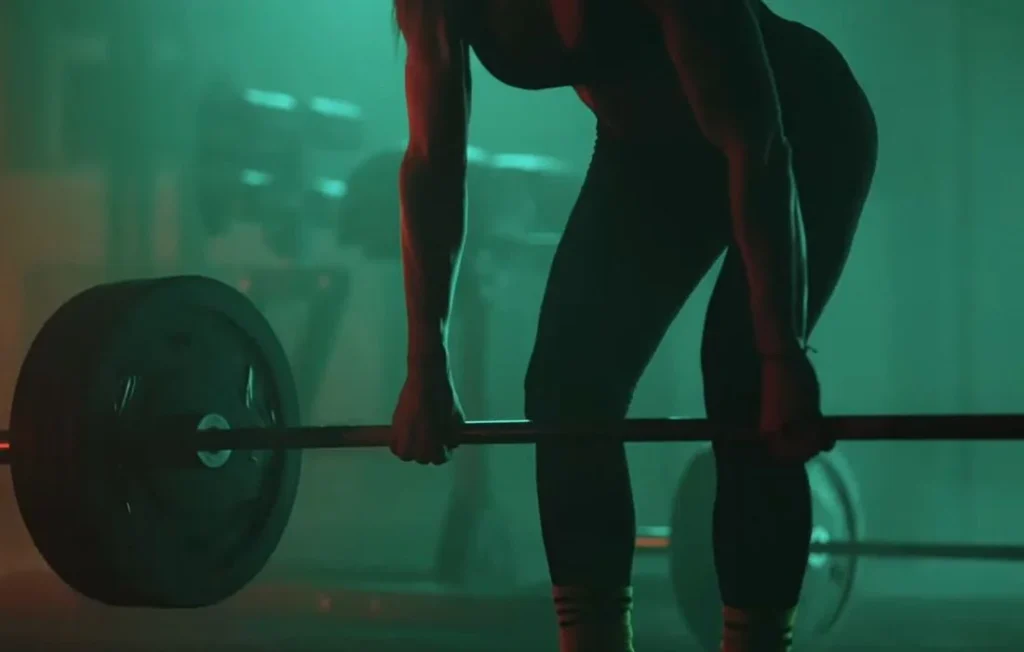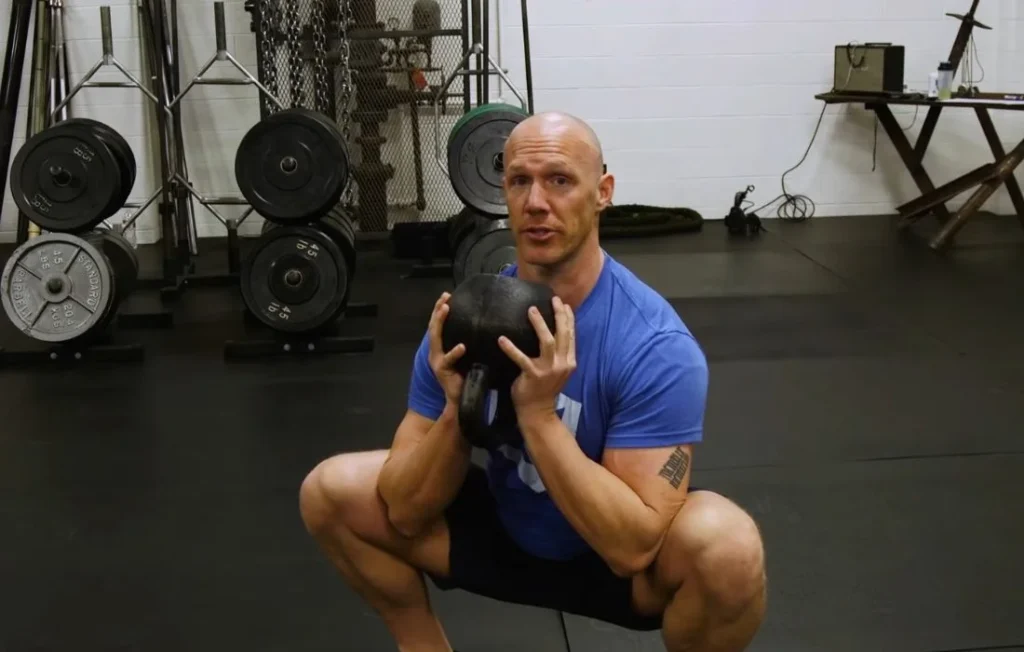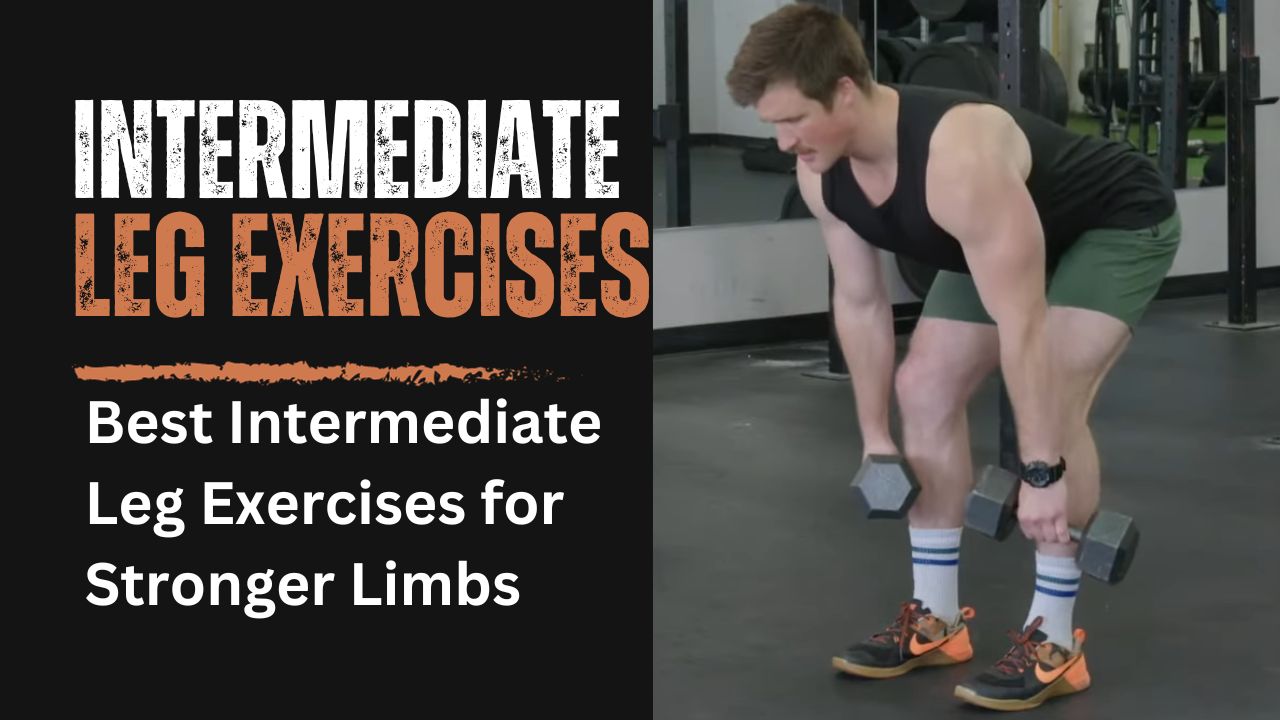Ah, the wonderful world of “Leg Day Exercises“! As we embark on this journey towards stronger, more powerful legs, it’s essential to understand the distinctions in our path. We often start with beginner workouts, eager to lay the foundation with the “Best Leg Exerciser“. Once those become easier, we itch for a challenge. Enter the intermediate stage – a crucial middle ground that’s neither too easy nor excessively challenging. As the renowned fitness philosopher, Dr Lionel Strenghtus, once said,
“In the realm of fitness, it’s the journey between the starting line and mastery where the magic truly happens.”
But what constitutes an “intermediate” exercise? They typically require a better understanding of form, a certain level of strength already built from “Beginner Leg Exercises“, and sometimes, even the incorporation of equipment. These exercises challenge balance, endurance, and strength simultaneously, allowing for holistic development. Moreover, “Leg Exercises to Improve Your Bone Health” become increasingly important at this stage. Let’s unpack this.
Why intermediate exercises?
So, you’ve mastered the basics, likely starting with “Bodyweight Exercises for Powerful Legs“, and you’re now eyeing those complex, advanced moves. But wait! Before you leap ahead, there’s a pivotal step that often goes underappreciated, yet is essential for your growth – the intermediate stage. This is where “Leg Exercises for Different Fitness Levels” come into play, ensuring you progress systematically. As the old fitness adage goes,
“The bridge between beginnings and mastery is built with the bricks of intermediate challenges.”

But why? Why not just jump from beginner to advanced? Let’s unravel this together.
Perfect Progression
Imagine you’re learning to play an instrument. You wouldn’t jump from “Twinkle, Twinkle, Little Star” to Beethoven’s Fifth Symphony overnight, would you? Just as with music, in fitness, there’s a flow, a rhythm. Intermediate exercises offer the perfect progression, allowing you to fine-tune your skills, challenge yourself a tad bit more, and set the stage for those heavier, complex workouts down the line.
Building on the Basics
The basics have given you a foundation. Intermediate moves are like adding walls to that foundation. They often incorporate the principles you learned as a beginner but with added layers of complexity, balance, or resistance. This ensures you’re not completely out of your depth but are still feeling the burn and challenge.
Safety First!
Jumping directly to advanced exercises can be a recipe for injury. Without the necessary strength, flexibility, and form that intermediate exercises help develop, tackling advanced moves can lead to strains, sprains, or worse. Remember, Rome wasn’t built in a day, and neither are muscles!
Mental Preparedness
Physically challenging? Yes. But there’s a mental game at play too. Intermediate exercises help bridge the gap in mental endurance and focus, teaching you to push through when things get tough, but not to the breaking point. This mental resilience is a must-have when you venture into more advanced terrains.
Mastery Over Quantity
Rushing through stages often means being a jack of all trades, a master of none. By investing time in intermediate exercises, you get the chance to truly master techniques, ensuring that when you do advance, you’re moving with precision and maximizing the benefits of each exercise.
Boosting Confidence
There’s a certain confidence that comes from nailing an exercise that’s just a notch above your comfort zone. It’s like taking a test you studied hard for. That confidence not only feels fantastic but propels you forward, ensuring when you do tackle advanced moves, you do so with gusto and self-assurance.
So, the next time you’re in the gym or your living room prepping for a workout, give those intermediate moves the respect they deserve. After all, it’s the middle chapters that make a story compelling, isn’t it?
Key Intermediate Leg Exercises
Embarking on the intermediate phase of your fitness journey is like stepping into a fascinating new chapter of your favourite book. It’s where the plot thickens and the adventures intensify. And when it comes to leg exercises, such as “Leg Lifts Exercises” and the “Best Leg Exercises for Runners“, it’s an exploration into newfound strength, balance, and endurance. Your legs aren’t just about walking or running; they’re the powerhouses of your body. And as you move past the beginner phase, you’ll want to engage them in exercises that do them justice. As renowned fitness guru, Helena Strongford, once remarked,
“The heart of a story, much like our fitness journey, is found not in its start or end, but in the thrilling crescendos of its middle chapters.”

Let’s break down some of the most effective intermediate leg exercises.
1. Squats
Goblet Squats
Goblet squats involve holding a kettlebell or dumbbell close to your chest. This variation introduces an upper body and core element to the traditional squat. It’s particularly effective for strengthening the quads, hamstrings, and glutes. The added weight also ensures more muscle engagement. It’s a fantastic progression from the bodyweight squat.
2. Lunges
Walking Lunges
Walking lunges are dynamic and involve lunging forward with each step. They challenge your balance and coordination more than stationary lunges. This exercise targets the quads, hamstrings, and glutes while promoting functional movement. Incorporating dumbbells can increase intensity and muscle engagement.
3. Deadlifts
Romanian Deadlifts
Distinct from the traditional deadlift, Romanian deadlifts emphasize the hamstrings and glutes. By maintaining a slight bend in the knees and pushing hips back, you’ll also engage the lower back. This variant is excellent for posterior chain development and improving hip flexibility.
4. Step-Ups
Weighted Step-Ups
Step-ups, especially with added weights like dumbbells, activate the quads, hamstrings, and glutes effectively. By elevating one foot onto a platform and then stepping up, you mimic real-world actions like climbing stairs. The added weight amplifies resistance and offers enhanced strength benefits.
5. Bulgarian Split Squats
Traditional Bulgarian Split Squats
One foot rests on a bench or platform behind, while the other supports your body weight in a lunge position. This exercise isolates each leg, ensuring balanced strength and addressing potential imbalances. It’s fantastic for targeting quads, hamstrings, and glutes and enhancing stability.
6. Calf Raises
Weighted Calf Raises
Calf muscles often get overshadowed in leg workouts, but they’re essential for overall leg aesthetics and function. Using weights, like dumbbells, can challenge these muscles more. The raised heel movement in this exercise ensures a focused calf workout, promoting strength and endurance.
These intermediate exercises into your routine, and you’re well on your way to more defined, stronger, and powerful legs. Just remember, it’s always about quality over quantity. Ensure proper form to reap the full benefits and prevent injuries. Ready to conquer your leg day?
Advancing Your Routine
Remember the thrill when you first started working out? Those early gains, the exhilaration of pushing your body, and the excitement of a new challenge. But as with many things in life, plateaus can hit. If you’re feeling stagnant or that your routine no longer sparks joy, it might be time to advance your fitness regimen. Let’s explore how.

1. Recognize the Signs of a Plateau
Your workouts feel easy, or you’re no longer seeing noticeable changes. These can be signs that your muscles have adapted to your current routine. Recognizing this is the first step to introducing more challenge.
2. Add Variety
Switch It Up
Routine can be the enemy of progress. Trying different exercises or variations can shock your muscles into growth. If you’ve been doing regular squats, try pistol squats or goblet squats for a change.
Cross-Training
Incorporate activities outside your usual regimen. If you’re into weightlifting, add some yoga or Pilates for flexibility. Conversely, if you’re a cardio junkie, some strength training can work wonders.
3. Increase Intensity
Lift Heavier
While maintaining proper form, progressively increase the weights you’re using. Your muscles grow by adapting to increased stress.
High-Intensity Interval Training (HIIT)
Incorporate short bursts of maximum effort followed by a rest or lower-intensity exercise. It’s proven to improve cardiovascular health and torch calories.
4. Focus on Weaknesses and Set New Goals
We all have them – those exercises we dread. Maybe it’s leg day, or perhaps it’s core workouts. Instead of avoiding them, double down. This holistic approach ensures balanced muscle development and reduces injury risks. Remember the objectives you had when you started? It’s time to level them up. Whether it’s lifting a particular weight, running a distance in a set time, or achieving a specific athletic skill, setting new targets can reignite your passion.
5. Employ Advanced Techniques
Supersets and Drop Sets
Supersets involve two exercises with no rest in between, while drop sets involve lifting until failure, then reducing weight and going again. Both techniques can lead to increased muscle hypertrophy.
Periodization
This involves cycling through endurance, hypertrophy, strength, and power phases in your training. It’s a systematic approach to ensure all aspects of fitness are covered.
6. Seek Expert Guidance & Stay Educated
A personal trainer or fitness coach can offer tailored advice and bring a fresh perspective to your routine. They can introduce exercises and techniques you might not have considered. The world of fitness is ever-evolving. Read books, follow credible fitness enthusiasts online, or enroll in courses. Knowledge can be the fuel for your next breakthrough.
7. Rest and Recovery
Advancing your routine doesn’t mean working out harder all the time. Prioritize rest and employ techniques like foam rolling, stretching, and perhaps even yoga to aid in recovery. Lastly, always stay attuned to your body’s signals. If something feels off or painful (beyond the usual muscle soreness), it’s essential to reassess and ensure you’re not pushing too hard.
Evolution is the essence of life, and your workout routine is no exception. By embracing change, continually challenging yourself, and staying committed, you can advance from a beginner’s enthusiasm to the dedication and prowess of a seasoned fitness aficionado. Ready to unleash the beast mode?
Tips for Recovery and Growth
As the saying goes, “Rome wasn’t built in a day.” Similarly, achieving your dream physique and peak performance isn’t about how hard you can push in a single session, but how well you recover and grow from each workout. Recovery is where the magic truly happens. Let’s delve into the art and science of muscle restoration, regeneration, and growth.
1. Prioritize Sleep
- The Power of Zzzs
Sleep is the most potent recovery tool at your disposal. It’s during deep slumber that growth hormones peak, aiding in muscle repair and growth.
- Quality Over Quantity
It’s not just about the number of hours but the quality of sleep. Ensure a dark, quiet environment and consider using white noise machines or earplugs if needed.
2. Optimize Nutrition
- Post-Workout Nutrition
The 30 minutes post-exercise, often dubbed the “anabolic window”, is crucial. Consuming a mix of proteins and simple carbs can jump-start the muscle repair process.
- Stay Hydrated
Water aids in nutrient transport and metabolic processes. Aim to sip water throughout the day, especially after intense workouts.
3. Embrace Active Recovery
- Light Activity
Instead of complete rest, engage in light activities like walking, cycling, or swimming. This promotes blood circulation, aiding in nutrient delivery to muscles.
- Stretching and Yoga
Both can enhance flexibility, alleviate muscle tightness, and promote relaxation. It’s a gentle way to encourage muscle recovery without straining.
4. Foam Rolling and Massage
- Myofascial Release
Foam rolling helps in releasing muscle knots and improving blood flow. It’s like giving yourself a mini-massage, targeting areas of tension.
- Professional Massages
Occasionally, treat yourself to a professional massage. It can aid in flushing out toxins and relaxing overworked muscles.
5. Cold and Heat Therapies
- Ice Baths and Cold Showers
Cold exposure can reduce muscle inflammation and soreness. However, it’s essential to limit exposure to avoid overcooling muscles.
- Heat Therapy
Saunas or warm baths can relax muscles and improve blood circulation, promoting faster recovery.
6. Supplements for Recovery
- Branched-Chain Amino Acids (BCAAs)
BCAAs can prevent muscle breakdown and reduce soreness.
- Creatine
Often used for boosting exercise performance, creatine can also aid in recovery by replenishing energy stores.
- Omega-3 Fatty Acids
Found in fish oil, these reduce muscle inflammation and can accelerate recovery.
7. Mental Recovery
- Mindfulness and Meditation
Physical recovery is just one aspect. Engaging in mindfulness practices can reduce cortisol (stress hormone) levels, facilitating faster recovery.
- Visualization
Visualizing muscle repair and growth can be a powerful tool in the recovery process, linking mind and body in the healing journey.
Conclusion
So, there we have it! A comprehensive guide to intermediate leg exercises for stronger limbs, intricately melding effort with technique, passion with patience. As we navigate through the vast world of fitness, it’s paramount to remember that true strength doesn’t solely emerge from the raw poundage hoisted or the sheer reps accomplished. It’s intricately carved in the sweat-soaked nuances of every perfect form, every controlled motion, and every conscious breath.
So, as you embark or continue on this journey, always remember that every squat, lunge, or deadlift you do is a testament to your commitment. Embrace this journey with an open heart, knowing that every drop of sweat, every burn you feel, and every hurdle you overcome gets you one step closer to your goals. Those legs, sculpted with dedication and diligence, will soon not just carry you, but indeed, become the very pillars of your pride. Dive deep, lift right, and let your legs tell your story of strength!

Chris David (Auther)
With my pen as my compass, I embark on a thrilling odyssey through the intricate landscape of health and fitness. In each blog post, I unveil the enigmatic realms of well-being, weaving together evidence-based wisdom, practical counsel, and a sprinkle of motivational stardust to illuminate your path toward boundless vitality and unwavering strength.
